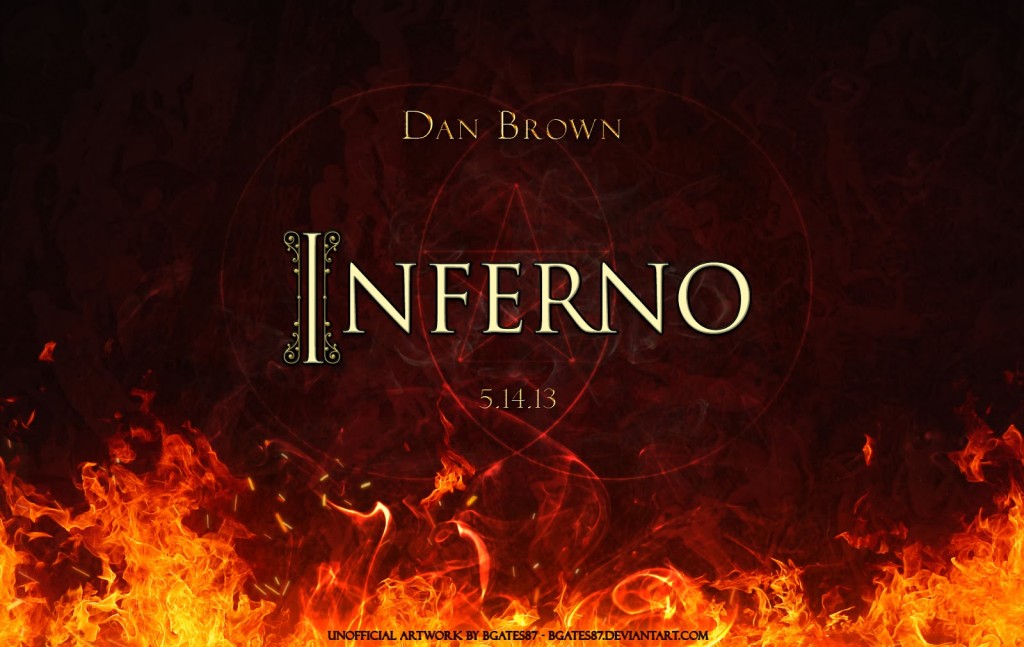
Writing That’s Hot Like an “Inferno”
has been fun to start exploring the writers we admire and whose stories excite
us. Aside from just revisiting our favourite books, it has given us a chance to
do the thing we hated (or at least I know I did WITH A PASSION) doing in
English classes: analyze style and motivation of authors and what makes their
books the kind that stay with us even after we have set them down. For me, Dan
Brown’s Inferno is another one of
these books.
Kenneth Miller’s “Only a Theory,” Dan Brown’s books are sold in the fiction
section of the bookstore. The excitement for me however, comes in Brown’s
seamless integration of historical facts with his fictional characters.
In his
book Inferno,
Brown bases a whole plot around the intricate and controversial
history of the epic poem “The Divine Comedy” by Dante Alighieri. More
specifically, the book gets its title from the first of the three parts of the
epic poem titled “Inferno.”
of the things that has always made Dan Brown’s books stand out is that his use
of just enough history makes the
reader question, “Could this happen?” The story of Inferno and a person so
wrapped up in the epic poem and surrounding art that it inspires a plot to kill
a large proportion of the human population could be seen as realistic. Viral
outbreaks and atomic warfare are man-made and have profound destructive
capabilities.
Add onto that what we know about psychopaths, sociopaths, and
other people capable of intelligently scheming while still managing to fly
under the radar, and you have a potential character. Further yet, compile a
list of all those kinds of people who have left their mark in history because
of their unique inspiration in art, science, math, and, I’m sorry, but it seems
pretty possible that Dan Brown’s Inferno could easily manifest in reality.
writers what we can take from this is not just that it is sometimes helpful to
use an element of history or well-known facts to scaffold your plot for your
reader (so they don’t just feel like they are entering a totally unrelatable
world), but it actually brings your story closer to home for them.
It gets more
exciting when the reader can think, “Wow… this could actually happen to me!”
There’s nothing like exploiting humanity’s natural propensity for empathy to
get inside their heads and connect them emotionally to the story.
integrating historical facts isn’t the only way to make your story relatable to
the audience, it is Dan Brown’s tool of choice (read Inferno) and it has served him well. Once
a reader has an emotional response to a story, reading the book has gone beyond
just an “enjoyable activity” and has become an experience for them.
 Affecting them on an emotional and reltable level actually triggers different
Affecting them on an emotional and reltable level actually triggers different
neurochemical pathways in the brain that induce the creation of stronger and
more permanent memories. Sort of like how I used to be afraid of water and the
smell of chlorine from my early swimming lessons days still elicits a
physiological nervousness that makes my stomach upset even though I have long
grown out of my hydrophobia. Once you link a memory to an emotion it becomes
more real and that’s the kind of gift you want to give to a reader: that heart
racing, adventurous, and emotionally rich journey that they can’t let go of
even if they try!
Thanks for that Dan Brown.
You May Also Like

Dreamers, Hobbies, Money and Me
September 30, 2013
What Do Your Readers Think About Self-Publishing?
July 15, 2013



